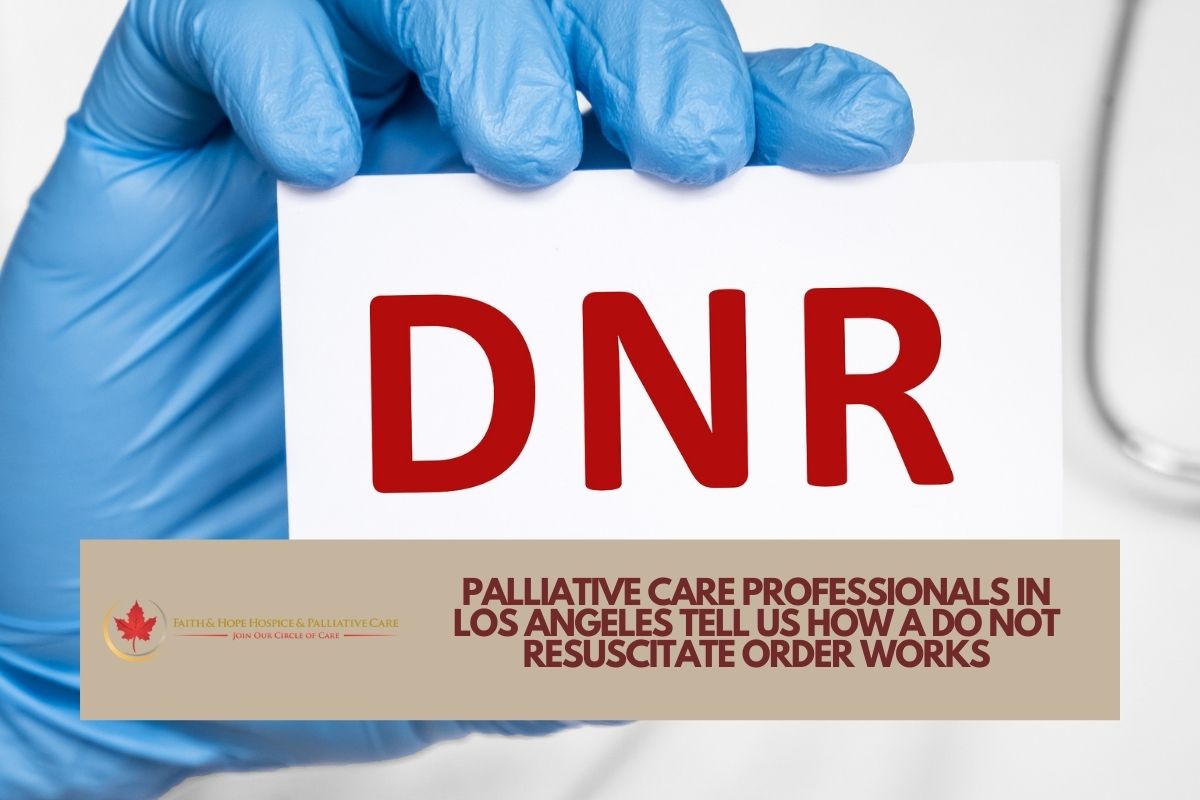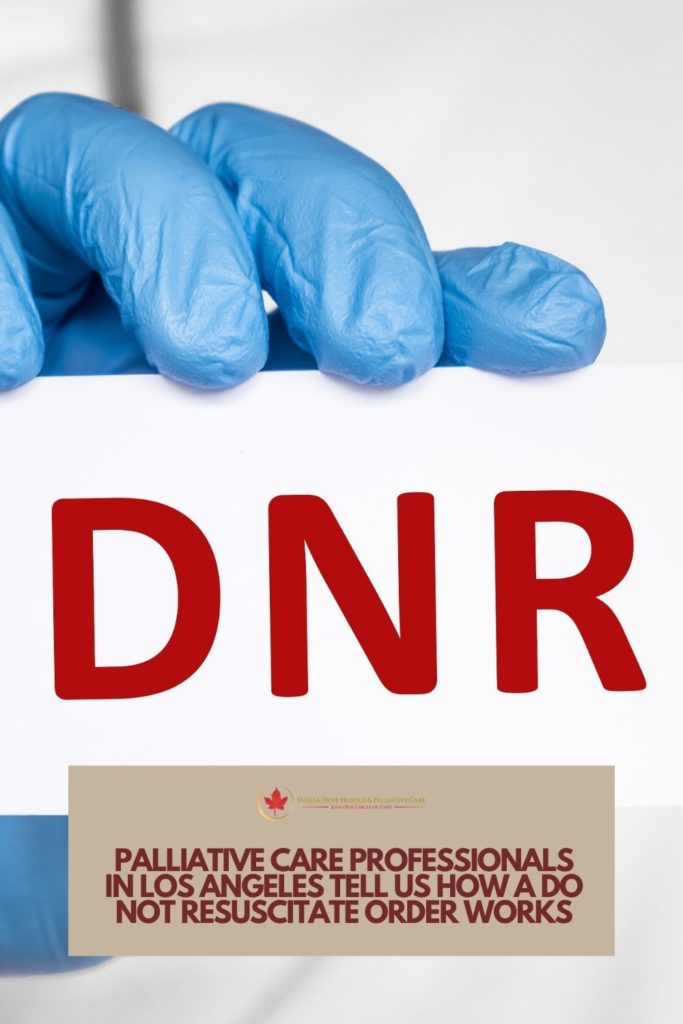
- By: administrator
- Blog
- No Comments
The palliative care professionals in Los Angeles believe that advanced care planning lets people decide how medical treatment will be carried out if they are in an emergency situation or can’t express their care preferences because they are incapacitated.
An advanced directive is usually drafted to outline who a person trusts to be in charge of their healthcare decisions if they can’t participate in their own care for whatever reason. A living will provides detailed information on their preferences for treatment in a range of potential medical situations.
Nevertheless, there is another aspect to think about besides those involved in advance directives for hospice staff in Los Angeles and Pasadena, and that is the Do Not Resuscitate order.

What Is A Do Not Resuscitate Order?
A Do Not Resuscitate Order, or otherwise known as DNR, is a legally binding doctor’s order that makes it very clear that no steps will be taken to restore breathing or a patient’s heartbeat if they experience respiratory or cardiac arrest.
Carers at palliative care facilities in Los Angeles normally set this up way ahead of an emergency occurrence, whether a patient feels actively about not wanting to be resuscitated in general or as part of the intentions carried out by the patients who have a life-limiting illness.
Again, palliative care staff in Los Angeles make it clear to us that a DNR is an order that specifically pertains to cardiopulmonary resuscitation or CPR. It does not provide guidance on how other potential treatments should be managed, such as medication or nutrition.
What Is Resuscitation?
CPR is a treatment that is frequently given to a patient when their breathing or heartbeat stops. As many of us know already, CPR is a simple procedure that involves mouth-to-mouth breathing and pressing on the person’s chest, but other methods may be used for resuscitation. For instance, an electric shock may be used if medical professionals are trying to restart the heart, and breathing tubes could also be used to open up the airway.
How Does A Do Not Resuscitate Order Work?
In the case that a patient chooses to move forward with a DNR or their named health care proxy establishes this decision on their behalf, it is recommended to meet with the patient’s physician to talk about all aspects of selecting or deciding against DNR orders. When a patient gets a DNR, it is placed in their medical record. A DNR only influences whether the patient will be given CPR. When it comes to palliative care, it is usually continued unless that patient decides against it.
Who Needs A Do Not Resuscitate Order?
Every abled person has the right to say no to potentially lifesaving medical treatment for any reason, and advance care planning can guarantee this right is adhered to if a person becomes powerless to participate in their own care decisions.
It may be best to request a DNR order if:
- If you are against the idea of being resuscitated
- have religious objections
- are concerned about the negative impact on your quality of life, or are worried about the potential risks of undergoing processes such as CPR.
Of course, CPR can save lives, but older or weak people could suffer broken bones, damage to their brain or other organs, or they may be left to breathe with a ventilator. CPR is usually more successful when the patient is younger and healthier, and most people who obtain DNR orders are already in weak health.
In contrast to this, if you want to receive CPR, you don’t have to do anything since this is the standard course of treatment when a person stops breathing. Because of lack of opposition, doctors will always do what they can to save a patient unless a DNR or any other type of order is in effect.
How Do You Get A Do Not Resuscitate Order?
If you choose to put a DNR order in place, let your doctor know. Your doctor has to follow your wishes or transfer your care to a doctor who is willing to follow them through for you.
The doctor will complete a form for a DNR order and add it to your medical record. Your doctor may also give instructions on getting a bracelet, card, or other documents to keep at home or in non-hospital settings stating your wishes. Additionally, some states’ health departments have standard forms that can be utilized.
It is a good idea to let your family know of your decision to prevent any disagreements if you have to be resuscitated.
What is an Advance Directive?
An advance directive is a legal document. It informs your doctor and family what type of medical care you want to have if you can’t let them know yourself. This could happen if you:
- Are in a coma.
- Are seriously injured.
- Are terminally ill.
- Have severe dementia
If you are admitted to the hospital, the hospital staff will most likely discuss with you about advance directives.
What If I Want To Change My Mind?
If you get a DNR, but later decide that you wish to be resuscitated, contact your doctor or health care team right away. Also, it would help if you let your family and caregivers know of your decision immediately. If you have any documents that include the DNR order, get rid of them to prevent any confusion from arising.
Get In Touch With Faith And Hope For More Details
If you want to know more about the different aspects of a Do Not Resuscitate order, do not hesitate to contact the team at Faith and Hope Hospice and Palliative Care for advice regarding this very important decision.
